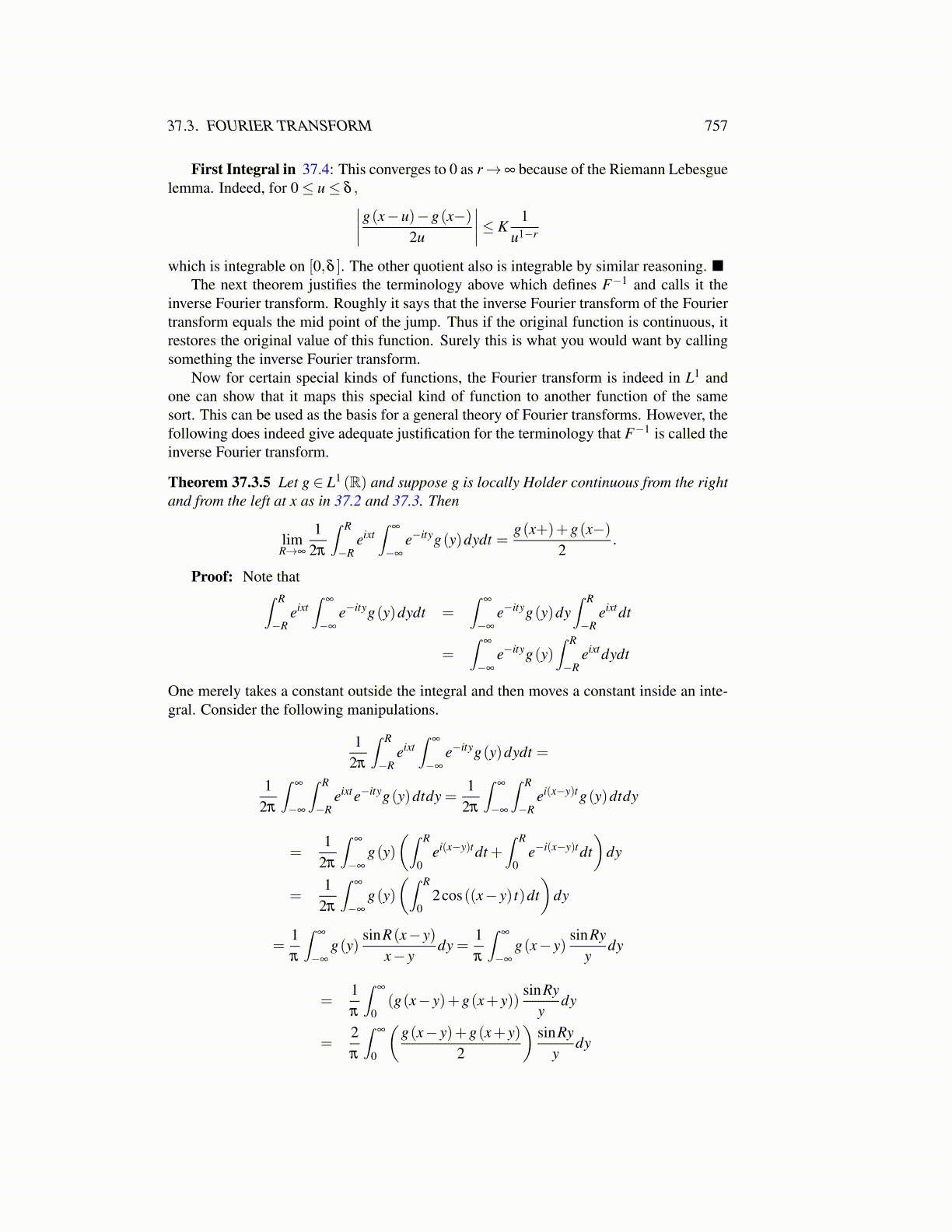
37.3. FOURIER TRANSFORM 757
First Integral in 37.4: This converges to 0 as r→∞ because of the Riemann Lebesguelemma. Indeed, for 0≤ u≤ δ ,∣∣∣∣g(x−u)−g(x−)
2u
∣∣∣∣≤ K1
u1−r
which is integrable on [0,δ ]. The other quotient also is integrable by similar reasoning. ■The next theorem justifies the terminology above which defines F−1 and calls it the
inverse Fourier transform. Roughly it says that the inverse Fourier transform of the Fouriertransform equals the mid point of the jump. Thus if the original function is continuous, itrestores the original value of this function. Surely this is what you would want by callingsomething the inverse Fourier transform.
Now for certain special kinds of functions, the Fourier transform is indeed in L1 andone can show that it maps this special kind of function to another function of the samesort. This can be used as the basis for a general theory of Fourier transforms. However, thefollowing does indeed give adequate justification for the terminology that F−1 is called theinverse Fourier transform.
Theorem 37.3.5 Let g ∈ L1 (R) and suppose g is locally Holder continuous from the rightand from the left at x as in 37.2 and 37.3. Then
limR→∞
12π
∫ R
−Reixt∫
∞
−∞
e−ityg(y)dydt =g(x+)+g(x−)
2.
Proof: Note that∫ R
−Reixt∫
∞
−∞
e−ityg(y)dydt =∫
∞
−∞
e−ityg(y)dy∫ R
−Reixtdt
=∫
∞
−∞
e−ityg(y)∫ R
−Reixtdydt
One merely takes a constant outside the integral and then moves a constant inside an inte-gral. Consider the following manipulations.
12π
∫ R
−Reixt∫
∞
−∞
e−ityg(y)dydt =
12π
∫∞
−∞
∫ R
−Reixte−ityg(y)dtdy =
12π
∫∞
−∞
∫ R
−Rei(x−y)tg(y)dtdy
=1
2π
∫∞
−∞
g(y)(∫ R
0ei(x−y)tdt +
∫ R
0e−i(x−y)tdt
)dy
=1
2π
∫∞
−∞
g(y)(∫ R
02cos((x− y) t)dt
)dy
=1π
∫∞
−∞
g(y)sinR(x− y)
x− ydy =
1π
∫∞
−∞
g(x− y)sinRy
ydy
=1π
∫∞
0(g(x− y)+g(x+ y))
sinRyy
dy
=2π
∫∞
0
(g(x− y)+g(x+ y)
2
)sinRy
ydy